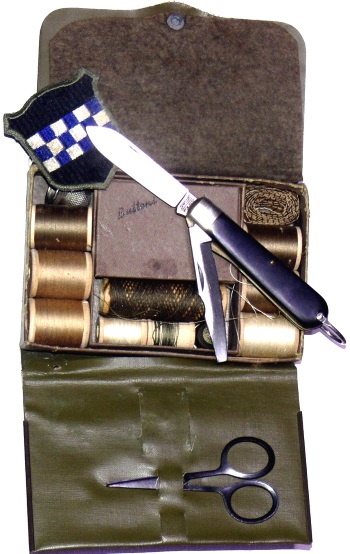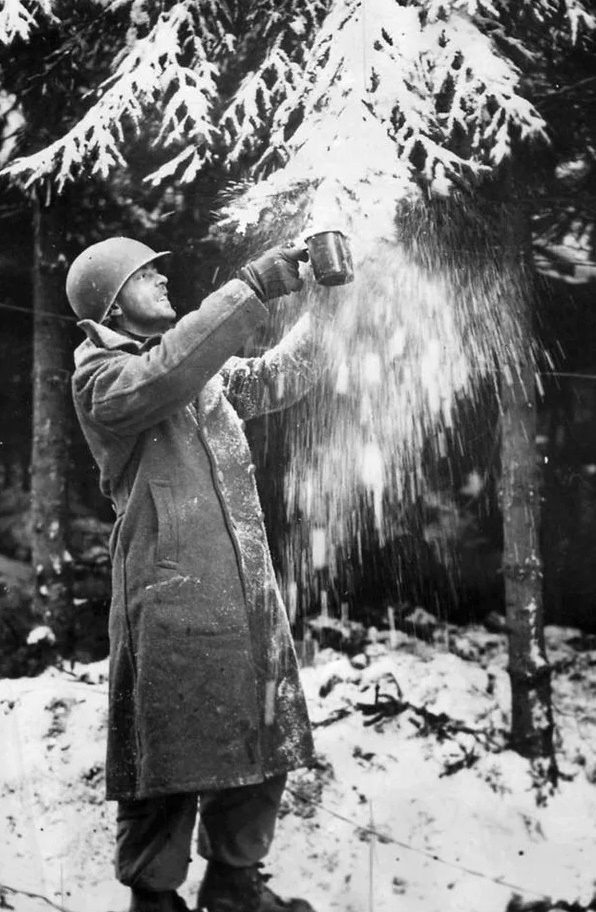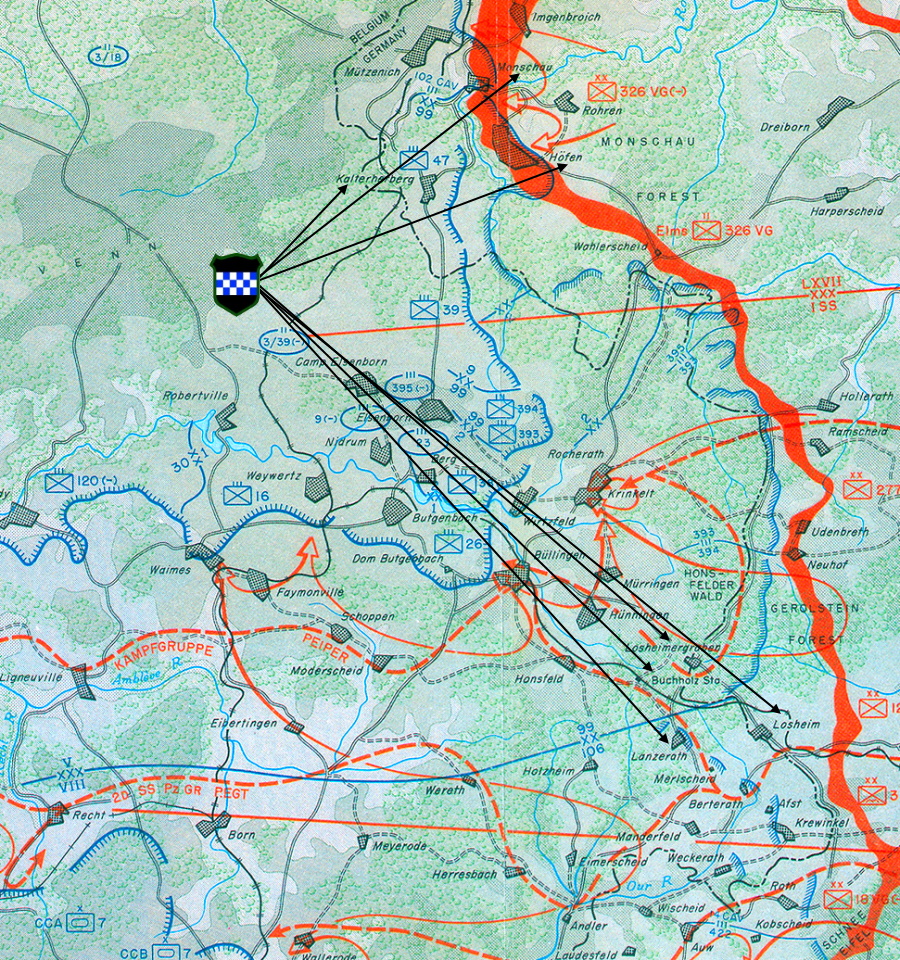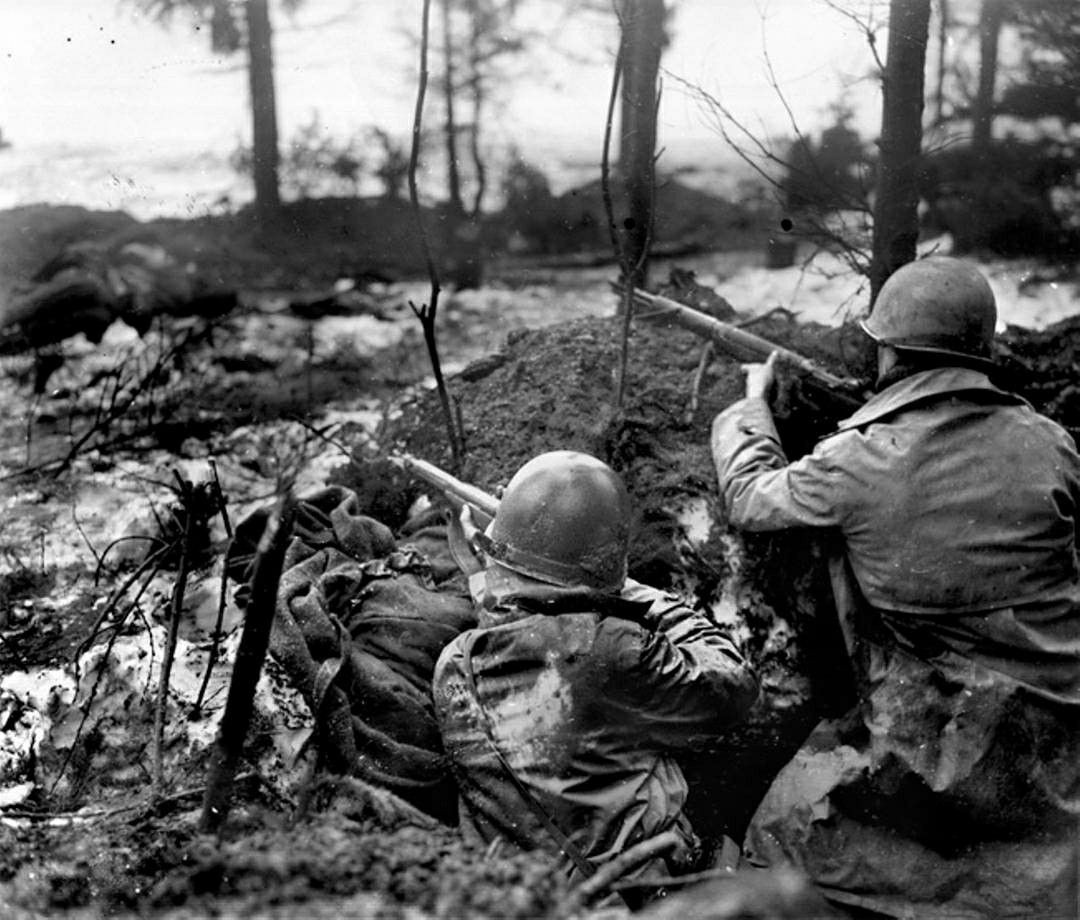Document Source: This archive comes from either an After Action Report or a Monograph. I have so many archives that I don’t find the origin again. Anyway, this is an original archive and should be considered as.

 The early days of the month of December 1944 witnessed major changes in the disposition of the units of the US V Corps to permit the support of the operations and to make possible offensive action in the sector of the Roer River Dams area in Germany. The 99th Infantry Division, on December 12, held defensive positions extending from Monschau, in the north to the corps’ southern boundary in Losheimergraben just around the Losheimer Gap, in Lanzerath, and inside the Bucholz Forest, astride the Belgian and German border. The 395th Infantry Regiment was disposed defensively from north to south with the 3rd Battalion in the Höfen area in Germany, the 2nd Battalion was in the center at Kalterherberg, and the 1st Battalion remained on the regiment’s right, southeast of Kalterherberg.
The early days of the month of December 1944 witnessed major changes in the disposition of the units of the US V Corps to permit the support of the operations and to make possible offensive action in the sector of the Roer River Dams area in Germany. The 99th Infantry Division, on December 12, held defensive positions extending from Monschau, in the north to the corps’ southern boundary in Losheimergraben just around the Losheimer Gap, in Lanzerath, and inside the Bucholz Forest, astride the Belgian and German border. The 395th Infantry Regiment was disposed defensively from north to south with the 3rd Battalion in the Höfen area in Germany, the 2nd Battalion was in the center at Kalterherberg, and the 1st Battalion remained on the regiment’s right, southeast of Kalterherberg.

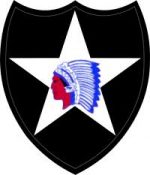 The mission of the Battle Babies (99-ID) in the December offensive action was to participate in the US V Corps offensive by conducting its operations under the same orders as the 2nd Infantry Division, attacking on the right flank of and in conjunction with the 2-ID on December 13, to seize objectives in Germany, successively (1) the vicinity of the road junction northwest of Arenberg; (2) the ridge southwest of the road junction west of Schöneseiffen; (3) the Harperscheid – Schöneseiffen area then the Dreiborn area; (4) the Herhahn – Mörsbach area and (5), a large area including the nose north of Dreiborn, the vicinity of Wollstoffen and the most important of all, the Urfttalsperhe (Urft Dam).
The mission of the Battle Babies (99-ID) in the December offensive action was to participate in the US V Corps offensive by conducting its operations under the same orders as the 2nd Infantry Division, attacking on the right flank of and in conjunction with the 2-ID on December 13, to seize objectives in Germany, successively (1) the vicinity of the road junction northwest of Arenberg; (2) the ridge southwest of the road junction west of Schöneseiffen; (3) the Harperscheid – Schöneseiffen area then the Dreiborn area; (4) the Herhahn – Mörsbach area and (5), a large area including the nose north of Dreiborn, the vicinity of Wollstoffen and the most important of all, the Urfttalsperhe (Urft Dam).
The 395-IR was assigned the mission of attacking in conjunction with the 2-ID while the 393-IR (99-ID) and the 394-IR (99-ID) for the most part remained in their defensive positions. Opposing the 99-ID in its zone of action were German units consisting of the, from north to south, 277.Feldersatz-Bataillon; the 991.Infantry-Regiment and the 294.Infantry-Regiment (2nd Battalion). The enemy attitude in the entire sector during the period of December 9 to December 12, had been and continued to be too stubborn to resist any offensive actions.
George Co, 395/99-ID
George Co, 395-IR (99-ID), had been activated at Camp Van Dorn (Mississippi) in the closing days of 1942. It moved then to Camp Maxey (Texas) in 1943 and sailed from the Zone of Interior on September 29, 1944, in direction of England. The month of October 1944 was spent in with filler replacements of the company had been made up of those men who had been affected by the cut-back of the Army Service Training Program (ASTP). Contrary to initial concern as to the probable attitude of these men on being released from the program, these men had made strenuous efforts to absorb in the minimum amount of time the training program in effect and to make the best possible soldiers. George Co 395-IR made its combat debut in World War II by occupying defensive positions in the generally considered quiet Kalterherberg, sector on November 9, 1944. The defensive area assigned to the company had permitted a portion of the company to be quartered in houses in Kalterherberg while the remainder were out on the position. Thus, the continual rotation of the men could be effectuated. Except for a few discomforts incidents due to the winter and a limited number of patrol skirmishes with the enemy, little action of any magnitude had taken place up until December 18. Casualties, which had been extremely limited, were chiefly of the non-battle variety except a great number of wood-made shoe AP mine cases (Shu-mine 42) being sustained incident to the patrolling activity conducted in the sector.
Relief from Defenses.
The 395-IR, less the 3rd Bn which was to remain in a defensive position at Höfen, Germany, was scheduled to effect movement into its assembly areas on December 12. Early on that day, the motor movement of the 2/395, was initiated from Kalterherberg to assembly areas in the Elsenborn sector in preparation for the December 13 offensive. December 12, was a particularly nasty day. Considerable snow had fallen and continued to come down. The wind was sharp and strong, adding greatly to everyone’s intense discomfort. Vehicles were forced to proceed at reduced rates of speed with a large share of the time being devoted to keeping vehicles out of or getting them out of ditches.
Disposition of the 395-IR.
The 2/395-ID, (less Fox Co attached to the 102-CG and on defense at Lammersdorf, Germany) closed into its assembly area during the late afternoon of December 12, in preparation for the attack on the following day. Easy Co 395-IR was attached to the 1/395-IR late on December 12 and subsequently moved off with the 1/395-IR in the initial phase of the attack on December 15. The 2/395-IR less two of its rifle companies, Easy and Fox, remained in the Regimental reserve on December 13. Late on December 13, the 2/395-IR displaced some 3 miles forward bringing it up behind the attacking 1/395-IR.
Company Situation.
George Co 395-IR, the remaining rifle unit of the battalion, set up a defense perimeter of the 2/395 area for the night of Dec 13. At approximately 2300 on Dec 13, the Company Commander was ordered to report to the 395-CP. There he was informed by the 2/395’s Battalion Commander that Easy 395 would revert to battalion control at daylight of Dec 14, that the 2/395 would launch a coordinated attack on Dec 14, and that the probable zone of commitment would be in the gap existing between the 2-ID attacking on the left and the 1/395 on the right, that the 2/395 attack order would be issued at 0700, Dec 14 at a point designated by the Battalion CO; that a heavy concrete enemy fortification in the probable zone of attack located on Hill 621, 3000 yards to the front, would ultimately be assigned to George 395 for reduction and that special equipment for an Assault Detachment would be made available to George 395 that night i. e. flame throwers, Bangalore torpedoes, demolition charges, and other items of a similar nature. In addition, Fox Co 395-IR would revert to and be available to the 2/395 on Dec 14 or Dec 15.
Attack Plan G-395.
The Company Commander of George Co, 395-IR, returned to the Company CP and with the Executive Officer and the 1st Platoon Leader who was to command the assault detachment, planned and discussed as much detail as possible for the actions for the coming day. No information about the enemy was available from the Battalion. Assault equipment was made available to Goerge Co at about 0330 on December 14, immediately checked, and preparations for the day completed as much as they could be in the light of known facts. At 0645, on the morning of December 14, the Company Commanders of Easy Co and George Co arrived at the previously designated point to receive the battalion attack order. George Co had been left under the control of the Executive Officer who was preparing the company for immediate movement. At approximately 0715, the 395-IR’s CO arrived in the area he had designated on the night of December 13 and issued the following ‘fragmentary’ attack order. Speaking to the two company commanders the CO stated that they knew what he wanted and that they should go get them. Having issued these somewhat limited instructions the Battalion CO immediately removed himself towards the rear. The two, to say the least, startled, company commanders concerned, as soon as they could recover from the shock of the all too obvious, and with the aid of a few cigarettes, reached the conclusion that if the 1/395-IR was going to receive any assistance from the 2/395-IR they would have to take the initiative on their own. The plan devised and agreed on by Easy 395 and George 395 Company Commanders was that Easy 395 would continue the attack from its presently held positions to the left of the 1/395-IR against comparatively light resistance of December 13 in an effort to relieve the left assault company of the 1/395-IR that had sustained terrific casualties on December 13. George 395 would move forward behind Easy 395 and the echelon to the left rear and protect the left flank and rear of the battalion.

 Upon reaching a creek some 1500-2000 yards to the front, if not forced to do so sooner, George 395 would commit itself in the gap to the left of Easy 395 and the right of the 2-ID. It was calculated that by doing so George 395 would be in a logical position to launch an assault on the fortified position on Hill 621, previously mentioned by the Battalion CO on the night of December 13 as a target of the battalion.
Upon reaching a creek some 1500-2000 yards to the front, if not forced to do so sooner, George 395 would commit itself in the gap to the left of Easy 395 and the right of the 2-ID. It was calculated that by doing so George 395 would be in a logical position to launch an assault on the fortified position on Hill 621, previously mentioned by the Battalion CO on the night of December 13 as a target of the battalion.
Movement to Forward Attack Area & Final Preparations.
In accordance with the attack plan, George 395 moved out of its Regimental Reserve area on the night of December 13 at approximately 0830. The company closed into its forward attack area at approximately 0945. Individual rolls and excess equipment were dropped. Those who had not eaten their C rations earlier did so at this time. The company command net was checked. Weapons and ammunition received attention, and final preparations were completed. An attempt to establish radio contact with the battalion was unsuccessful. The company had not received any communication from the Battalion HQs since the issuance of the ‘attack order’ earlier in the day. The only means of communication between the company and higher Hqs was by means of messengers. In view of this situation information involved other than Easy 395 and George 395 was completely lacking. No information about the enemy was available. George 395 was up to about 85% strength and in spite of the cold and obviously vague situation morale had not been adversely affected to any great degree. The zone of action of the company was heavily wooded rolling ground with little undergrowth, covered by about a foot of snow. Fields of fire, 200-300 yards, were excellent. The weather had moderated somewhat from the previous 72 hours. One full C ration was issued. The officers and NCOs completed their last-minute checking and prepared to move their units forward on command.
Initiation of the Offensive Action.
George 395 moved out of its forward attack area at 1030 on the morning of December 14. The formation assumed was the 1st Platoon, Company Command Group, 3rd Platoon, 1st Platoon, How Co 395 (attached), Weapons Platoon, the remainder of Hqs Co, and the 2nd Platoon. Following Easy 395 at a distance of two to three hundred yards and echeloned to the left rear the leading elements of George 395 covered the movement forward of a unit that was engaging in its first offensive action against the enemy. The roughness of the terrain covered by snow impeded movement to reduce the rate of advance considerably. The air was cold and crisp, and morale was high. Following a month of defending a commonly known weak sector these ‘green’ comparatively untried troops were anxious to create a position for themselves in the hall of the Combat Infantrymen. So, the company moved forward under the protection of flank patrols, each element maintaining its assigned distances.
After approximately 1500 unopposed yards, small arms fire broke out in the direction of advance of Easy 395. Shortly thereafter the Company CO, radioman, and runner of George 395 worked forward to the halted leading elements of the company. The 1st Platoon had advanced to a position astride a small creek with its leading elements partway up the very steep reverse slope of a high hill. A hasty check proved that this was the point at which George 395 would move to the left flank of Easy 395 and that the hill the leading elements were on was Hill 621, the one on which the enemy fortified position was supposed to be located. At this time, at approximately 1130, enemy artillery and mortar fire began to fall on the position of the company which was strung out on the forward slope and top of the hill to the rear of the 1st Platoon. Believing that the steepness of Hill 621 would afford protection from the artillery fire, the Company CO ordered the remainder of the company forward as rapidly as possible to occupy temporary defensive positions near the ground being held by the 1st Platoon.
Heavy, but ineffective enemy machine-gun fire was being directed against the left flank of George 395 from the head of a draw 500-600 yards to the left front in the gap between the left flank of the company and the 2-ID. The 1st Platoon on moving to the left of Easy 395 when this company had become engaged had inadvertently created a gap of from 200 to 250 yards between it and positions being held by Easy 395. The 3rd Platoon of George 395 on successfully completing the crossing of the creek and gaining the protection of Hill 621 was committed to this gap on the company’s right flank to close it. The remainder of the company plus its attachments was moved up behind the two forward platoons. Enemy artillery and mortar fire which had continued to fall was now having little effect on the company because the hill to the front did mask the slope. Shortly thereafter the enemy artillery and mortar fire lifted. Enemy machine-gun fire from the left flank, however, did continue, but still with little effect. Easy 395 on the right was being subjected to heavy small-arms fire. Contact with the battalion by SCR-300 could not be established. The situation other than George 395 and Easy 395 immediate sector was entirely unknown. Information was unavailable as to the progress of the 2-ID on the left nor of the 1/395-IR on the right flank of the 2/395-IR. For all practical purposes, there was nothing in the rear of the company.
Almost 50.000 SCR-300 units were produced by Motorola during World War II, with the first production sent by the Army Air Force for use during the invasion of Italy in July of 1943. The Radio Set SCR-300 and SCR-300-A consist of an 18-tube, crystal-controlled portable receiver and transmitter, designated BC-1000 (or BC-1000-A), along with batteries and accessories such as the case, handset, and two lengths of the whip antenna. It has an innovative tuning that sets both receives and transmits frequency in tandem along with integrated calibration. A squelch circuit is provided to minimize the roar in the high-gain circuits when there is no signal. The SCR-300 utilizes the frequency band of 40.0 to 48.0 megacycles divided into 41 channels of 200 kilocycles. The transmitter power is 0.3 watts and gives a range of 3 miles with the longer antenna. The BC-1000 was used with the same frequency band in the AN/VRC-3 (used in tanks) so the two sets could intercommunicate between armor and infantry. The entire SCR-300 assembly weighs between 32 and 38 pounds depending on the batteries used (BA-70 or BA-80). The Radio Set SCR-300 was issued with War Department Technical Manual TM 11-242, on June 15, 1943, and later dates.











